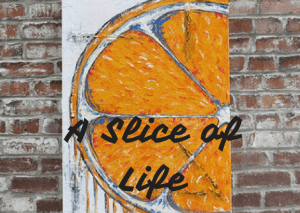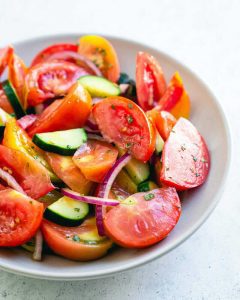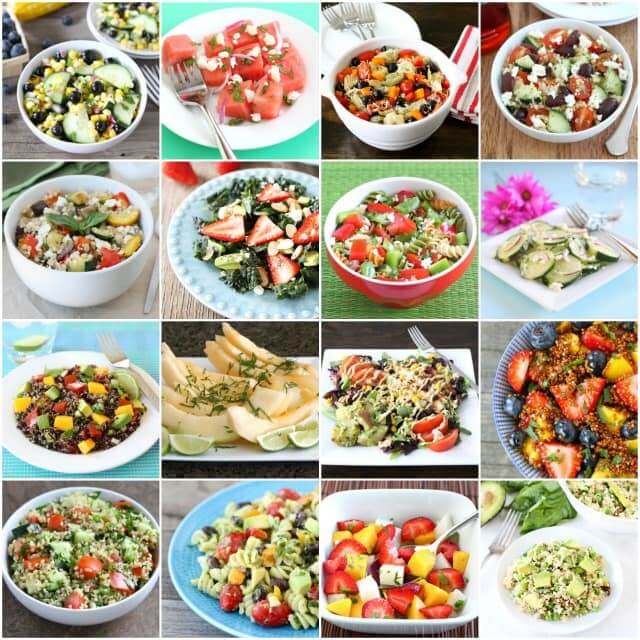Reading Time: 3 minutes
Salads and summer go together. Ruchira tells us about the origin and types of salads. An exclusive for Different Truths.
 Torrid tropical summer is upon us again. The long spell of soaring temperatures takes a heavy toll of our overall health more particularly the digestive system. Hence it is always advisable to adhere to a light diet during this tormenting season. And what better food item is there to fit the bill than salads?
Torrid tropical summer is upon us again. The long spell of soaring temperatures takes a heavy toll of our overall health more particularly the digestive system. Hence it is always advisable to adhere to a light diet during this tormenting season. And what better food item is there to fit the bill than salads?
Interestingly the origin of the term ‘salad’ may be traced back to the Latin word Salata (salted). For the simple reason that in those times vegetables were seasoned with brine or saltwater. Over the centuries the pristine salad comprising raw vegetable greens and fruits steadily evolved into a premium dish, and an integral part of the Continental menu.
Interestingly the origin of the term ‘salad’ may be traced back to the Latin word Salata (salted). For the simple reason that in those times vegetables were seasoned with brine or saltwater. Over the centuries the pristine salad comprising raw vegetable greens and fruits steadily evolved into a premium dish, and an integral part of the Continental menu. The masses in ancient Greek and Roman civilisations consumed salads as did the ancient Persians whose civilisation flourished a little later. The legendary 16th century Mary Queen of Scots was reportedly fond of eating salads comprising, boiled celery roots, leafy vegetables, French Parsley, truffle (a type of fungus), and slices of hard-boiled eggs, tossed in a thick mustard dressing! After the discovery of the New World, the European migrants introduced salads to America, between the 16th and 19th centuries. Till date salad remains immensely popular in North America. What is more, it is commonly visible at most meals during the day.
The most outstanding features of salads are first, they can be made with very little effort (read labour) since most of the items to be used in their natural state. Secondly, their maintenance level is low. Most stay intact at room temperatures although a few varieties require refrigeration. Finally, their flexible nature. Salads are potpourris of sorts! Well, nearly anything and everything may go into salads: boiled eggs, fish (chiefly Sardine & Anchovy), chicken, processed meats (salami and sausages), all shades of bell peppers, nuts, black peppers, apples, pineapples, mushrooms, onion, peas, cucumber, olives, lettuce and several varieties of cheese-Feta Cheddar and Parmesan to name a few. Salads differ in taste based on the type of dressing used: salad oil, vinegar, mustard, and mayonnaise. If you so desire, you may use permutations and combinations of these ingredients.
During my childhood, I often ate a basic salad – rings of onion-potato-cucumber and tomato generously sprinkled with lemon juice, garnished with chopped green chillies and fresh parsley leaves. Gradually I got to learn about diverse types of salads at parties, lunches and feasts.
During my childhood, I often ate a basic salad – rings of onion-potato-cucumber and tomato generously sprinkled with lemon juice, garnished with chopped green

chillies and fresh parsley leaves. Gradually I got to learn about diverse types of salads at parties, lunches and feasts. As of now, my personal favourite happens to be the much-hyped Cesare Salad. It contains ample doses of Worcestershire sauce, Dijon mustard, not forgetting the crunchy croutons. The taste is mind-blowing! On the second rung, I place Russian Salad, containing my favourite eggs, potatoes, salami and lip-smacking mayo.
Indeed salads possess such an addictive quality that heavyweight foodies find it an uphill task — to refrain from gorging on salads — to control weight gain. Not to worry, however. Nowadays, diet experts have devised and designed many diet salads for their clients. For instance, curd/yoghurt replace oils, and other dressings; cheeses are out, as are potatoes and processed meats. Black/Bengal grams (boiled & sprouted) and other sprouted lentils are increasingly finding their way into new avatars of salads. However, the taste must not be compromised with. Who would eat a bland insipid salad? Therefore, experiments are perpetually underway to make salads both tasteful and a feast to the eyes!
Photo from the Internet

















